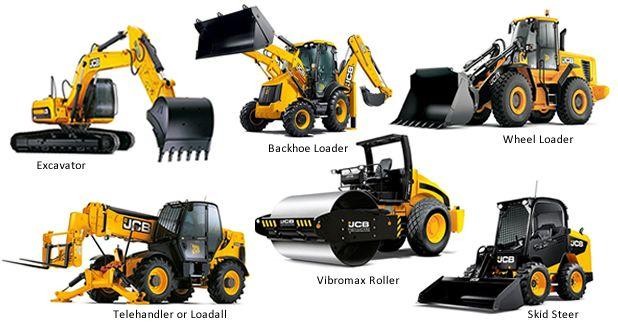Maximize Your Budget by Comprehending the Costs Connected With Building And Construction Devices Leasings
Recognizing the complete scope of costs connected with construction tools services is critical for maximizing your budget. What approaches can be utilized to properly manage these costs and guarantee an extra reliable rental experience?
Introduction of Rental Costs
When taking into consideration building and construction tools leasings, recognizing the connected costs is vital for effective budgeting and task preparation. Rental costs can vary significantly based upon a number of elements, consisting of tools type, period of rental, and area. The initial rental cost frequently mirrors the equipment's market demand and its connected functional abilities, affecting the total expense.
In enhancement to the base rental price, secondary prices may develop, such as transport fees, fuel additional charges, and upkeep charges. It is important to make up these additional expenses to precisely analyze the total cost of leasing devices. Moreover, the rental period can impact prices; longer leasings might certify for discounted prices, while temporary rentals might incur higher everyday fees.

Breakdown of Rental Prices
A comprehensive understanding of rental rates is vital for specialists and job managers intending to maximize their budgets. Rental rates for construction tools normally are composed of a number of elements, consisting of base rates, time-based costs, and use charges.
Base rates are the core costs associated with the rental of the tools, commonly identified by the type and dimension of the equipment. These prices can vary significantly, affected by elements such as tools need, schedule, and regional market trends. Time-based fees, which may be daily, weekly, or monthly, offer to accommodate different project timelines and rental periods.
Additionally, rental prices may consist of usage fees, which apply when equipment is made use of beyond a defined threshold, ensuring that the rental company can make up deterioration. Seasonal need changes can also affect rental prices, with peak building and construction seasons typically regulating higher costs.
Furthermore, recognizing the rental business's plans regarding upkeep and insurance policy can give further insight right into the overall expense framework. By assessing these elements, service providers can make educated choices, ensuring the choice of rental tools lines up with both task demands and budget plan constraints.
Added Costs to Consider
Understanding the complexities of extra charges is critical for contractors to manage their overall rental expenses efficiently. Past the basic rental rates, various supplemental fees can substantially influence the complete price of tools service. These charges commonly consist of distribution and pickup fees, which can differ based on distance and logistics associated with carrying the devices to and from the task site.
Moreover, some rental firms might impose fuel surcharges if the equipment is returned with much less gas than when leased. It is also necessary to be mindful of prospective cleaning fees, specifically for specific devices that needs extensive maintenance after usage.

Extensively examining the rental agreement and making clear these extra fees in advance can help contractors ensure and prevent unexpected costs that spending plans continue to be undamaged throughout the job lifecycle.
Maintenance and Repair Costs
Normal repair and maintenance costs are often neglected variables that can substantially affect the overall expense of building devices leasings. When leasing tools, it is important to take into consideration not only the rental charges however additionally the potential expenses linked with keeping the machinery in optimal operating condition.
Lots of rental firms include basic maintenance as component of the rental arrangement; however, much more unexpected malfunctions or extensive repair services can bring about additional expenses. It's necessary to review the rental contract thoroughly to comprehend what maintenance services are covered and what obligations drop on the occupant.
Furthermore, equipment that is not well-maintained can result in ineffectiveness on duty site, potentially enhancing and triggering delays project costs. To reduce these risks, it is recommended to conduct regular examinations and maintain open communication with the rental supplier concerning any concerns that occur during usage.
Insurance Coverage and Obligation Expenses
Insurance and obligation expenses are essential elements that can substantially affect this link the overall expenditure of building and construction tools leasings (rental company near me). These expenses guarantee that both the rental firm and the customer are secured from prospective financial losses emerging from mishaps, damages, or theft throughout the rental duration

Furthermore, customers must be conscious of any kind of deductibles or exclusions in the insurance plan, as these can affect prospective out-of-pocket expenditures. Comprehending the terms of any insurance policy protection is important to prevent unanticipated expenses. site Eventually, budgeting for insurance coverage and responsibility expenses can assist make certain a smoother rental experience and protect versus economic risks connected with building and construction projects.
Conclusion
In verdict, a detailed understanding of the costs associated with building devices leasings is necessary for reliable budget monitoring. Ultimately, educated decision-making concerning tools leasings adds to the overall success of building undertakings.
Rental costs can differ dramatically based on several elements, consisting of tools type, duration of leasing, and area (forklift rental). The rental period can affect pricing; longer leasings may qualify for reduced rates, while short-term leasings could sustain higher everyday charges
By conducting detailed research study and involving with reputable rental firms, contractors can successfully navigate the complexities of rental prices, inevitably optimizing their economic sources.
Beyond the common rental prices, numerous supplementary fees can substantially impact the total cost of devices leasing. Rental business typically provide liability insurance that covers injuries to third celebrations or damages to building, while tools damage insurance coverage can cover the expense of repair work or replacement if the leased equipment is harmed.